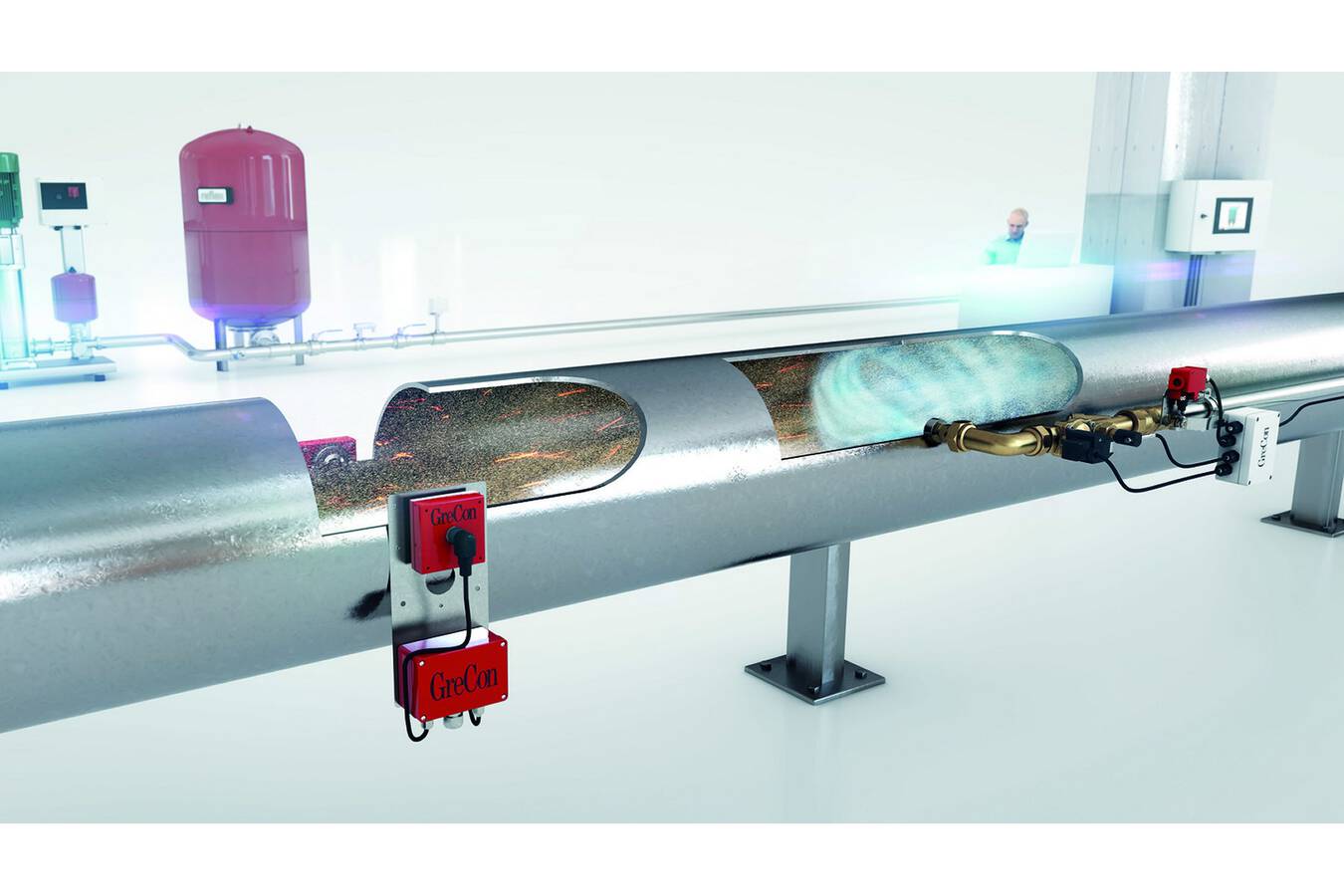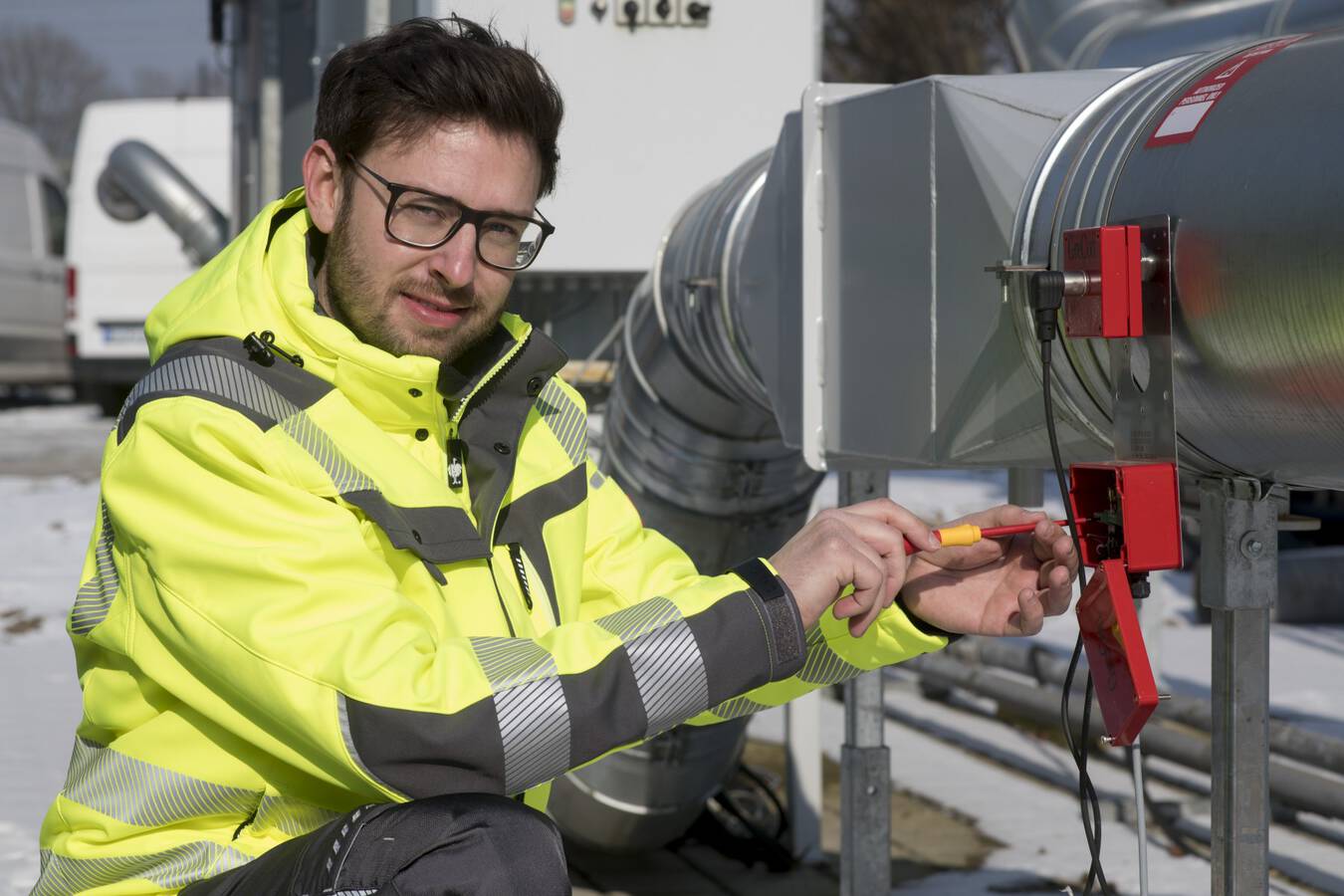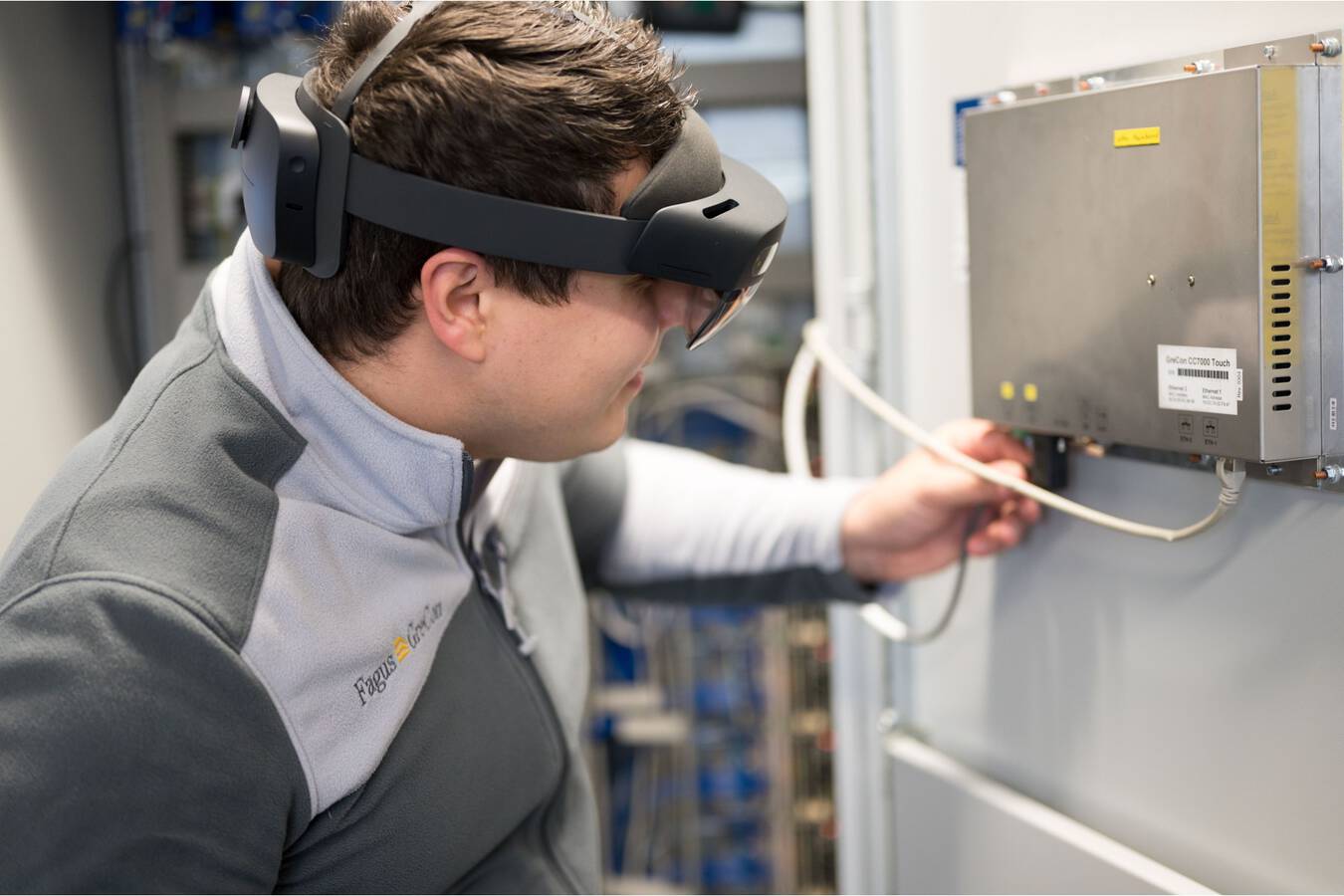A contribution to productivity increase and quality assurance
The digitalisation growth of the last few months opens up new options for designing many different processes more efficiently in integrated preventive fire protection of industrial production systems as well. Preventive fire protection systems integrated into process control perform tasks for ensuring product quality in addition to working as an early warning system today thanks to smart sensors and their smart networking.
Direct data exchange with production control not only permits process visualisations, but also control and regulation processes. This increased connectivity is the most important building block in order to predictively plan maintenance tasks with the help of data analyses in fire protection facilities and to increase the usage duration of components at consistently high plant safety in future as well. Additionally, the risk of unplanned downtimes reduces and productivity increases.

General structure of a spark extinguishing system
If service deployments on site are not possible, e.g., due to travel restrictions, experts can offer remote-support to staff on site by way of video transmission and augmented-reality solutions. This permits performance of required tasks with great efficiency under instruction by the experts – at any time, quickly and without any travelling effort.
Connectivity - the invisible revolution not only from the automotive industry
Developments in preventive fire protection are increasingly influenced by the megatrend of “connectivity”. The interaction between preventive fire protection solutions and production facilities opens up new potentially for increasing productivity.
A few years ago, fire protection was still at the focus of preventive fire protection systems. Today, these systems increasingly also help increase productivity. What is new about this? Every fire that does not happen increases productivity and plant availability. Preventive fire protection solutions, such as systems for spark detection, perform this work entirely unnoticed. The systems detect the dangerous initial ignitions, eliminating the danger by applying, e.g., very fine water mist. The water volume used for this is so low that production continues undisturbed. The result will be documented, but the operator is only shown an information to be confirmed.
Alarm data turn into usage data
Even now, leading preventive fire protection solutions can distinguish whether, e.g., three sparks in short sequence are a danger or can be classified as harmless within the scope of the production process via definition of alarm levels. Beyond this, fire protection systems are increasingly used for building complex early warning systems that go far beyond a function scope assigned to a preventive fire protection system this way.

Spark detectors are mounted on the corresponding pipeline
Thanks to cutting-edge sensors and an application-specific algorithm, preventive fire protection systems generate alarms also if an unusual number of events that are harmless on their own are generated in a specific period of time. If those data are, e.g., transferred to the plant control in a chopping process and connected to the quality data of the delivered material, important conclusions can be drawn to the quality of the delivered material.
This results in a process and fire protection data inventory that may provide early information on anomalies in the production process. As a result, measures can be initiated in time to help avoid production or safety technical faults. The combination of data from fire protection and plant control may also make an important contribution to quality assurance.
“Digitalisation does not send any additional photons to the sensor. It brings no drop of water more quickly to its target either, and yet, investments in increasing digitalisation of the system pay off,” says Nils Vespermann, head of fire protection product management at Fagus-GreCon. Custom adjustment of the smart sensors for the respective ambient conditions, improved connectivity for preventive fire protection systems and customer control systems, as well as optimised wear-focused maintenance processes are going to significantly improve process safety and plant availability alike in future according to Vespermann.

Use of augmented reality permitted execution of the VdS certification virtually without delay in spite of travel restrictions.
Collecting data inventories
Consistent digitalisation of preventive fire protection concepts and their components as well as networking between the systems with their respective production facilities allow these smart systems to collect more and more data from the production process, increasing both safety and availability of a plant. Where reactions in the process control were still tripped relay-controlled via programmed events a few years ago, user-defined data are now transmitted to the process control system through smart sensors of a preventive fire protection system, where they are combined with data from other systems and evaluated. Detailed and user-friendly visualisation permits quick and secure recognition of unexpected conditions. Suitable corrective measures can be initiated right away. Connection to cloud-based services permits data access from anywhere.
Smart services for sustainable use of resources
Progress in sensor technology permits individual specification of maintenance intervals based on wear data as well. These dynamic maintenance intervals in the scope of predictive maintenance not only extend maintenance intervals, but also the usage duration of the spare parts monitored in this manner. The two areas of “reducing undesired downtimes” and “optimal use of components”, which still often seem to be in conflict today, can thereby be harmonised by high-performance sensors.
In order to integrate the more sustainable use of resources that comes from application of dynamic maintenance intervals into the production process even better than before, dynamic maintenance intervals must be considered in the corresponding rules. The sensible combination of fixed and dynamic maintenance intervals and their anchoring in the rules surely is a subject that will keep us busy at a greater scope in future as well.
TÜV-IT certificates
The area of cybersecurity has already taken another step. The corresponding TÜV-IT certificates provide orientation here. The VdS directive 3836 “Cyber security for systems and components of fire protection and safety technology” has been developed in order to meet the special requirements of cybersecurity in the area of fire protection and safety technology. The risk conditions from increasing networking are observed in detail and special requirements to information safety of fire protection and safety products are phrased.
Remote support will become a matter of course
The lockdown has shown us the importance of such rules. Travel restrictions often made it impossible for service engineers to support on site. Use of video transmissions with augmented reality solutions made it possible to virtually compensate for these restrictions: The engineer can look through the customer’s eyes, in order to outstandingly guide and support their customer in solving mechanical issues. Of course, the corresponding safety requirements must be considered for this, e.g., to counter cyberattacks. One thing is certain: networking of the systems is going to expand further. Remote support will become a matter of course. This may increase the risk of undesired outer influences. On the other hand, that same risk is rendered relative by the advantages of resource protection in combination with the options for productivity increase.


